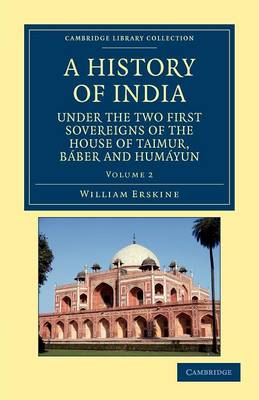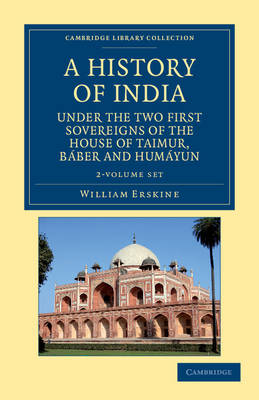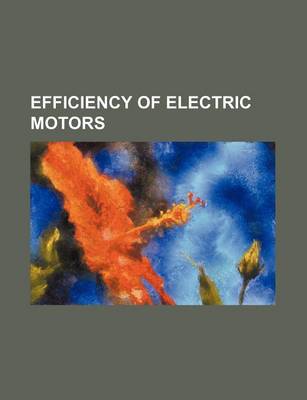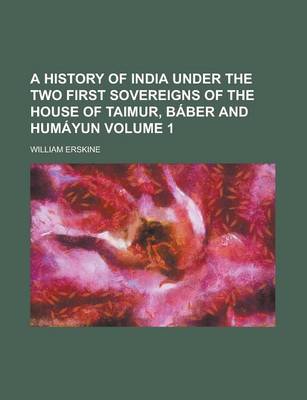Cambridge Library Collection - South Asian History
1 primary work • 4 total works
Volume 2
This two-volume work by the Scots orientalist and historian William Erskine (1773–1852) was published posthumously by his son in 1854. It describes the history of India under the Mughal rulers Babur and his son Humayun, descendants of Taimur (Tamburlane), and is acknowledged as one of the earliest western scholarly accounts of Mughal rulers in India. Erskine had also translated the Memoirs of Emperor Babar (1826) and completed John Malcolm's biography of Lord Clive (1836). Volume 2 deals with the history of Humayun, beginning with his accession upon his father's death, his expulsion from India by rivals and his exile in Persia from 1543. He returned in 1555 to his court in Delhi, with Persian support which had a profound influence on the language, art and culture of India, and he subsequently extended his empire before dying after a fall in 1556.
This two-volume work by the Scots orientalist and historian William Erskine (1773-1852) was published posthumously by his son in 1854. It describes the history of India under the Mughal rulers Babur and his son Humayun, descendants of Taimur (Tamburlane), and is acknowledged as one of the earliest scholarly accounts of Mughal rulers in India. Erskine had also translated the Memoirs of Emperor Babar (1826) and completed John Malcolm's biography of Lord Clive (1836). Volume 1 tells the story of Babur's accession to his ancestral possessions in Central Asia, describes the rivalry and warfare which ended with him being expelled from his homeland, and ends with his death in 1531 as imperial ruler of Afghanistan and most of Northern India. Volume 2 describes Humayan's succession, his expulsion from India, exile in Persia, and return with Persian support, which had a profound influence on the language, art and culture of India.
A History of India Under the Two First Sovereigns of the House of Taimur, Baber and Humayun Volume 2
by William Erskine
Published 15 January 2013
This two-volume work by the Scots orientalist and historian William Erskine (1773-1852) was published posthumously by his son in 1854. It describes the history of India under the Mughal rulers Babur and his son Humayun, descendants of Taimur (Tamburlane), and is acknowledged as one of the earliest western scholarly accounts of Mughal rulers in India. Erskine had also translated the Memoirs of Emperor Babar (1826) and completed John Malcolm's biography of Lord Clive (1836). Volume 2 deals with the history of Humayun, beginning with his accession upon his father's death, his expulsion from India by rivals and his exile in Persia from 1543. He returned in 1555 to his court in Delhi, with Persian support which had a profound influence on the language, art and culture of India, and he subsequently extended his empire before dying after a fall in 1556.
This two-volume work by the Scots orientalist and historian William Erskine (1773-1852) was published posthumously by his son in 1854. It describes the history of India under the Mughal rulers Babur and his son Humayun, descendants of Taimur (Tamburlane), and is acknowledged as one of the earliest western scholarly accounts of Mughal rulers in India. Erskine had also translated the Memoirs of Emperor Babar (1826) and completed John Malcolm's biography of Lord Clive (1836). Volume 1 begins with preliminary remarks on Indian history, and a general account of the three great divisions of the Tartar tribes. The history of Babar (Babur) begins with his accession to his ancestral possessions in Central Asia in 1495, aged twelve, describes the rivalry and warfare which ended with him being expelled from his homeland, and ends with his death in 1531 as imperial ruler of Afghanistan and of most of Northern India.



